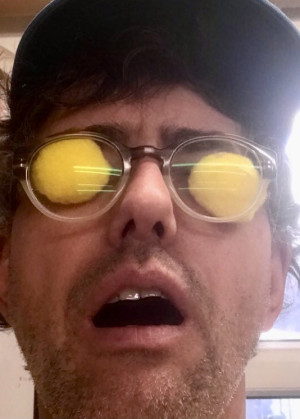AFTER VAN GOGH
Greig Burgoyne
New works
Opens 29/9 per prenotare scrivere a Questo indirizzo email è protetto dagli spambots. È necessario abilitare JavaScript per vederlo.
Via Belle Arti 8
BOLOGNA
The Performance ‘at a window-after Van Gogh’ is based upon the drawing ‘wheatfield seen from the window of Vincent’s room at the hospital of Saint Paul’ 1889. Part of an ongoing series of new works that seek to test the conceptual and performative frameworks within the drawings by the Dutch artist. In doing so, redefine drawing as an event of being inside the inside of that framework not outside it looking in.
Burgoyne seeks to activate the space depicted as a situation between the physical, visual, and mental. A motif of numerous late works by Van Gogh, the performance focuses on the wall depicted in the drawing. The world beyond it (the visual), the world within it (the physical and immediate) and the imagined reality sensed from the window- (the psychological/ mental) that wanders throughout that meeting of the physical and visual.
The material used will be are sheets of yellow fabric (‘dust sheets’- the material put on top of furniture when a person is decorating/painting a room) as such a means to protect and yet conceal that event. Yellow was Van Gogh’s favourite colour, but also an ongoing fascination for Burgoyne being as it is also a reference to light. Whilst light illuminates all things, its spectrum is one where the colour yellow is absent.
Burgoyne will explore this tension of the inside, the outside, the seen and the sensed of this situation. He seeks to suggest in the drawing happening that paradox of seeing and unseeable, is to shift from being on the site, within the site - consumed by that situation and subsequently seeking to evade it.
In doing so, Burgoyne attempts to suggest that the ‘drawing’ is that event of it happening, seeking to bring about its ‘imaging’. Not as a view or illustration, not as being in front of the wall, nor beyond it in ‘the world’ but inside the inside of the wall as an ideal, neither before or after limits but at its joints.
Duration: approx. 20mins.
The performance ‘Flowering tree’ takes as its starting point a drawing by Van Gogh, it’s also a play on the name of the brand of photocopy paper that the artist uses in the performance called ‘ Evolution’. This is part of an ongoing series of new works that seek to test the conceptual and performative frameworks within the drawings by the Dutch artist. In doing so, as ways to redefine drawing as a event of coming into appearance.
Burgoyne immerses himself in the act of repetition and a critique of reproduction. The performance takes place on the mezzanine and the audience watches from below. The performance uses a pack of 500 sheets of white photocopy paper. ‘Flowering tree’ sees Burgoyne attempt to produce a line, again and again.
An act of reproduction that sees tragic machismo and absurd desperation collide. The performance is an attempt to amplify a rolling up of a line/sheet of paper that begins from inside the zip of his trousers. At the moment when Burgoyne is rolling the paper from one sheet into the other, he makes affirmative sounds. The vocal element shifts from the softly spoken when the task is easy to louder and desperate expressions as it seeks conclusion and becomes more arduous. Like all things entropic, this phallic line will fall, it will break. Each time the drawing falls downwards towards the audience below as it sheds its ambition, namely, to bring drawing into appearance. ‘Flowering tree’ is pathetic and primal, as van Gogh tragedy and a Robert Mapplethorpe absurdity collide.
‘Flowering tree’ is that seeking to bring about appearance akin to a collision of Van Gogh and Robert Mapplethorpe. The resulting reality is an awareness of the materiality of drawings surplus in seeking to do this, and the impossibility to reach that conclusion that sees closure fully appear. As such ‘flowering tree’ in coming into appearance is its disappearance by default.
Duration: approx. 15 minutes
